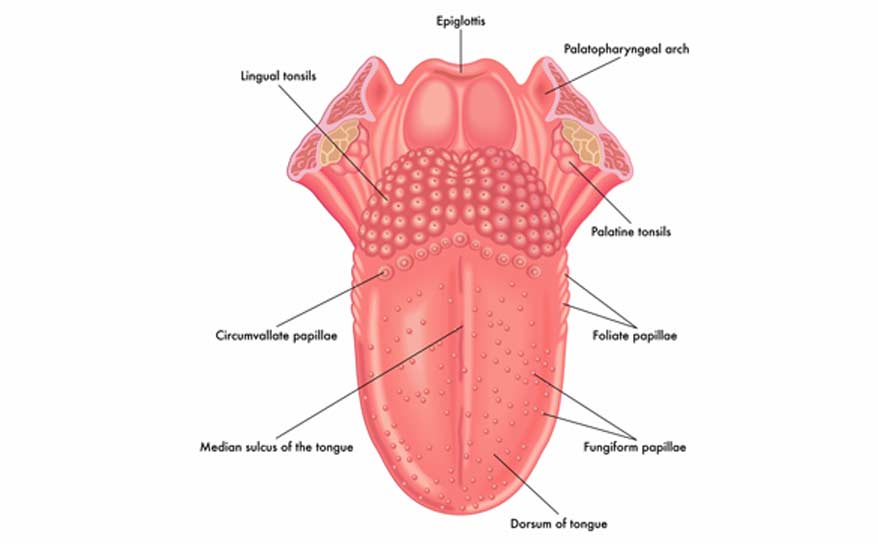
There are several reasons why surgical removal of the tonsils is necessary.
Tonsillectomy is the surgical removal of the tonsils and is one of the most common outpatient surgeries performed in the United States. Tonsils are found in the back of the throat and are involved in your body’s defense against foreign microbes.
The palatine tonsils are two sponge-like tissues located in the back of the throat. As part of the lymphatic system, they play an important role in fighting off infection. The tonsils respond to viruses and bacteria that enter through the mouth and nose by producing white blood cells and helping to activate the immune response.
Who is a Candidate for Tonsillectomy?
The two most common reasons to have a tonsillectomy include chronic tonsillitis and abnormal sleep breathing, which leads to snoring and/or sleep apnea.
Criteria for tonsillectomy based on American Academy of Otolaryngology Head & Neck Surgery due to recurrent tonsil infections include:
- More than 6 episodes in a single year
- More than 5 episodes a year for 2 consecutive years
- More than 3 episodes a year for 3 consecutive years
The procedure may also be recommended if:
- The tonsillitis has significantly affects one’s professional or personal life
- An infection that results in a collection of pus behind a tonsil (peritonsillar abscess)
- The condition doesn’t improve with drug treatment or a drainage procedure


Individuals with breathing issues during sleep may also be considered for tonsillectomy. A tonsillectomy may be necessary to help manage these symptoms. Other rare disorders of the tonsils, such as cancer or bleeding, may require a tonsillectomy.
Tonsillectomy Procedure
Tonsillectomy is performed under general anesthesia. As a result, individuals have no memory of the surgery and do not have pain during the procedure. Anesthesia experts monitor oxygenation and heart rate, ensuring patient safety.
Tonsillectomy is usually completed in under 30 minutes and there are several methods to perform tonsillectomy. There is not one superior approach and the surgeon will determine the preferred approach based on his or her experience.
Tonsillectomy can be performed via:
- Electrocautery – This approach utilizes thermal energy to remove the tonsils and stop any bleeding.
- Cold steel dissection – With this approach, tonsils are removed with a scalpel and bleeding is controlled with sutures or thermal energy.
- Harmonic scalpel – This approach employs ultrasonic vibrations to cut and stop bleeding at the same time.
- Other approaches include the use of an ultrasonic vibrating harmonic scalpel, rotating microdebrider, or CO2 laser.
Preparing for Tonsillectomy
It is important to stop taking all anti-inflammatory medicines (like aspirin, ibuprofen, naproxen, etc.) two weeks prior to tonsillectomy. Stop all herbal supplements and vitamins two weeks prior to surgery.
Surgery is performed on an empty stomach, therefore no food or beverages after midnight prior to tonsillectomy. On the day of surgery, the individual undergoing tonsillectomy will require someone to accompany them to the surgery center and transport them home after surgery. Most individuals require assistance for the first few days after surgery.
Tonsillectomy Recovery
Children typically recover much faster than adults after tonsillectomy. Young children may not even complain of pain, while some adults might require a couple weeks to recover sufficiently to resume normal activities. It is advisable for children to avoid school for two weeks to reduce over-exertion.
Adults are advised to anticipate two weeks of downtime prior to resuming a normal work schedule. Some individuals are able to work from home after one week. No strenuous activity (like running, climbing stairs, yoga, or weightlifting more than five pounds) for the first two weeks after surgery.
Pain is the most common complaint in individuals have who undergone tonsillectomy. Pain is most severe the first 7-10 days after surgery, and a prescription for pain medications are given to help alleviate the discomfort. Individuals may note throat, jaw, and/or ear discomfort after tonsillectomy.
It is normal to have a slightly elevated temperature the first 48 hours after tonsillectomy due to dehydration and the effects of anesthesia on the lungs. Walking and non-strenuous activities are encouraged.
After surgery, it is important to maintain hydration with plenty of fluids. Most individuals prefer room temperature or chilled foods for comfort. Avoid acidic, citrus, and spicy foods for two weeks. Adults are encouraged to refrain from alcoholic beverages the first two to three weeks after tonsillectomy.
Wound Healing: It is normal to have white discoloration of the wound in the surgical site for up to three weeks after surgery when the wound bed fully heals. Foul smelling breathe is common and a sign of dehydration.
The Tonsillectomy Diet:
Fluids – water, apple juice, milk, iced tea, iced coffee, soup, etc.
Soft foods – ice cream, pudding, yogurt, applesauce, mashed potatoes, scrambled eggs, oatmeal, etc.
Foods to avoid – tortilla chips, fried chicken, steak, hamburger, etc.
Risks of Tonsillectomy
As with all surgical procedures, tonsillectomy is accompanied by certain risks. These include, but are not limited to:
- Bleeding during or immediately after surgery. In rare cases, severe bleeding may occur during or immediately after surgery, resulting in the need for further intervention and a hospital stay.
- Delayed bleeding during healing. There is an approximately 3-10% chance of a delayed bleed, usually during the second week of recovery when the scabs start to fall off. This may require hospitalization for observation or a return trip to the operating room to stop the bleeding.
- Swelling. Swelling of the tongue and palate the first few hours to days after surgery may make swallowing, speech, and breathing more difficult.
- Infection. This may result in bad breath, ear pain, and fever.
- Rare occurrence: Changes in taste, changes in voice, airway fire, etc.
Return Precautions and Emergency Follow Up
Call your surgeon’s office or proceed to the nearest emergency room if you experience any of the following:
- Bleeding. Heavy bright red bleeding or vomiting large clots of blood.
- Fever. Temperature greater than 101 F (38.1 C) that is not responsive to acetaminophen.
- Dehydration. Signs of dehydration include reduced urination, thirst, weakness, headache, dizziness, or lightheadedness.
- Breathing problems. Shortness of breath.


